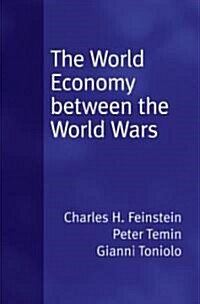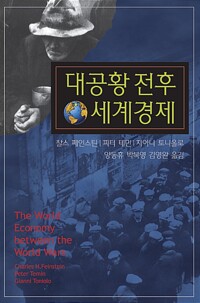
단행본
The world economy between the world wars
- 발행사항
- New York : Oxford University Press, 2008
- 형태사항
- xiii, 222 p.: ill.; 24cm
- ISBN
- 9780195307559
- 청구기호
- 322.8 F299t
- 서지주기
- Includes bibliographical references (p. 201-216) and index
소장정보
| 위치 | 등록번호 | 청구기호 / 출력 | 상태 | 반납예정일 |
|---|---|---|---|---|
이용 가능 (1) | ||||
| 1자료실 | 00011464 | 대출가능 | - | |
이용 가능 (1)
- 등록번호
- 00011464
- 상태/반납예정일
- 대출가능
- -
- 위치/청구기호(출력)
- 1자료실
책 소개
The European Economy between the Wars, (OUP, 1997) has become the definitive economic history of Europe in the inter-war period. Placing the Great Depression of 1929-33 and the associated financial crisis at the center of the narrative, the authors comprehensively examined the lead-up to and consequences of the depression and recovery. The authors now expand their scope to include the entire world economy, and have created a new edition: The World
Economy between the Wars. New material focuses on the structure of the world economy in the 1920s, including a special focus on the United States, Japan, and Latin America.
The European Economy between the Wars, (OUP, 1997) has become the definitive economic history of Europe in the inter-war period. Placing the Great Depression of 1929-33 and the associated financial crisis at the center of the narrative, the authors comprehensively examined the lead-up to and consequences of the depression and recovery. Peter Temin and Gianni Toniolo (their former co-author, Charles H. Feinstein, has died) now expand their scope to include the entire world economy, and have created a new edition: The World Economy between the Wars. New material focuses on the structure of the world economy in the 1920s, including a special focus on the United States, Japan, and Latin America. In addition, chapters that discuss the post-depression recovery now cover The New Deal and recovery in general in the United States and Japan. This new edition is a necessary update, and invaluable resource for those who desire an overview of the inter-war area beyond the usual discussion of the 1929 stock market crash. The book's broad geographic coverage, as well as its clarity and chronological execution, will appeal to students of economic history, as well as those academics in other fields whose research involves the inter-war period.
The European Economy between the Wars, (OUP, 1997) has become the definitive economic history of Europe in the inter-war period. Placing the Great Depression of 1929-33 and the associated financial crisis at the center of the narrative, the authors comprehensively examined the lead-up to and consequences of the depression and recovery. Peter Temin and Gianni Toniolo (their former co-author, Charles H. Feinstein, has died) now expand their scope to include the entire world economy, and have created a new edition: The World Economy between the Wars. New material focuses on the structure of the world economy in the 1920s, including a special focus on the United States, Japan, and Latin America. In addition, chapters that discuss the post-depression recovery now cover The New Deal and recovery in general in the United States and Japan. This new edition is a necessary update, and invaluable resource for those who desire an overview of the inter-war area beyond the usual discussion of the 1929 stock market crash. The book's broad geographic coverage, as well as its clarity and chronological execution, will appeal to students of economic history, as well as those academics in other fields whose research involves the inter-war period.


